|
Disasters. Heatwaves. Brexit. Political turmoil. It feels like society really is crumbling. Could the end of days be just around the corner? And it shouldn’t be too much of a surprise. American Horror Story – which begins its eighth season on FOX on 27th September at 10pm, appropriately called “Apocalypse” – has been warning us for years. Don’t believe us? Here are seven ways American Horror Story is predicting that the apocalypse is coming. The Anti-Christ Is Here As Seen In: Season 1, “Murder House” In The Show: Fathered by the evil seed of ghostly high school shooter Tate (Evan Peters – in full BDSM “Rubber Man” costume no less) and delivered by Dr. Montgomery (Matt Ross) – an already-dead quack with a penchant for Frankenstein-type experiments – baby Michael is about asn anti-christy as bonnie, bouncing, bloodthirsty babes come. After being adopted by murdering neighbour Constance, Michael proves his evil credentials by slaughtering the nanny. Kids, eh? In Real Life: OK, so no Satanic cult has announced the birth of the anti-christ just yet. But the world’s in such a state, there must be one amongst us already. The Sins Of The Father Are Being Repeated As Seen In: Season 2, “Asylum” In The Show: Bloody Face is a deranged serial killer who tortures and flays women – complete with a mask made from his victims’ skin. He’s revealed to be Briarcliff Asylum psychiatrist, Dr Oliver Thredson (Zachary Quinto). But even a bullet to the back of Thredson’s head can’t stop Bloody Face’s reign of bloody terror. Johnny (Dylan McDermott), the son of Thredson and would-be victim Lana (Sarah Paulson), takes up the mantle of Bloody Face years later for a new reign of terror. In Real Life: Global warming’s about to bake us all to death. Natural disasters are wreaking havoc with the world. And political turmoil brings us ever closer to World War 3. All thanks to the ecological crimes and political legacy of past generations. But has that stopped us committing the same crimes? Nope. Instead we continue polluting, arguing amongst ourselves, and generally setting out to kill destroy the world. Just hand over the ol’ skin mask… Society Is Ready To Burn Itself At The Stake As Seen In: Season 3, “The Coven” In The Show: The Coven is a secret society of New Orleans witches – survivors of the Salem witch trials – who burn, kill, and condemn each other in the pursuit of being all powerful. If that’s not bad enough, lead witch Cordelia (Sarah Paulson) stabs herself in the eyes with garden shears to get “second sight” powers. Ouch and double ouch. In Real Life: Even with a pair of stabbed out eyes, these witches couldn’t be a more insightful allegory for modern society if they dropped toe of frog in the cauldron and said, “sShow us a perfect example of how the world is tearing itself apart”. Themes of racism, religion, oppression, and sexual violence punctuate its inherent message: can’t we all just get along? The fact that the Coven is back for the eighth apocalyptic season says it all. The end is most definitely nigh. All The Worst People Have Come Together As Seen In: Season 5, “Hotel” In The Show: James March (Evan Peters) – famed serial killer and former proprietor of Hotel Cortez – holds a ghostly dinner party, where he plays host to a collection of America’s most despicable murderers: Richard Ramirez, John Wayne Gacy, Aileen Wuornos, Jeffrey Dahmer, and the Zodiac Killer. Regrettably, Charles Manson can’t make it. In Real Life: It seems like something from a dark fantasy, but if you want to find all the worst people in the world in one place, a quick look on social media will do the trick. The constant bickering, trolling, snow-flakery, and incessant meme sharing is sure to bring about the end of the world. Reality Can Be Murder As Seen In: Season 6, “Roanoke” In The Show: Season Six reimagines the show as a paranormal documentary, recounting the story of a family terrorised by ghostly colonists. But the success of the doc sees the family and the actors who played them return to the haunted house for a follow-up Most Haunted-style series. Which is when the bodies start piling up. In Real Life: “Celebrity is a mask that eats into the face,” said John Updike. “And slices your throat, stabs you to death, and buries you in the woods,” he should have also said. Because Roanoke is more than just a horror story – it’s also a razor-sharp satire on reality TV, fame, and media exploitation. It predicts a different kind of apocalypse, not brought on by nuclear weapons, natural disasters, or the wrath of God, but by something even more terrifying: celebrity-crazed folk willing to do anything for their five minutes of fame… Politics Will Kill Us All As Seen In: Season 7, “Cult” In The Show: The wake of the 2016 US election leaves the town of Brookfield Heights, Michigan divided and in a state of turmoil. While Ally (Sarah Paulson) is plagued by evil clowns (who may or may not be real), alt-right crusader Kai (Evan Peters) turns his political aspirations into a full-blown Charles Manson-inspired cult. In Real Life: It’s not hard to see how Season 7 of the horror series is a harbinger of political unrest – something that seems to be fast tracking us towards civil war/certain doom/nuclear holocaust/never ending arguments about Brexit around the dinner table at Christmas. The Apocalypse Will Be Televised As Seen In: Season 8, “Apocalypse”
In The Show: As always with American Horror Story, the upcoming season is a mystery. All we know is that it will crossover with seasons 1 ‘Murder House’ and 3 ‘Coven’. Oh, and it’s about the end of the world. In Real Life: With American Horror Story’s knack of predicting impending doom, gloom, and apocalyptic goings-on, let’s assume the trailer is a warning to humanity and be very afraid when the new series lands on FOX this month. In other words, it’s time to start stocking up on supplies and building that emergency shelter. AMERICAN HORROR STORY: APOCALYPSE premieres on FOX on 27th September at 10pm. Catch up with AMERICAN HORROR STORY SEASON 7: CULT, available now on Blu-ray and DVD and AMERICAN HORROR STORY: THE COMPLETE SEASONS 1-6 is available now on DVD. I've always been fascinated by the things we leave behind. There's a photograph of me, about 18 months old in the summer of 1959, holding my Great Grannie's hand in her daughter, my Gran's, back garden in Kilbirnie. She was born in the 1880s, less than twenty years after the American Civil War, before the Boer War, before telephones, radio, automobiles and air flight. She saw both World Wars, and lived long enough to see manned space flight and men orbiting the moon. She never got to see Neil Armstrong taking his one small step, missing it by a year, but I was sitting with her daughter and granddaughter watching as it happened. I've been in touch with that history, fingertip to fingertip, and it's now captured for as long as the digital image exists somewhere in cyberspace. I sometimes imagine her holding her own great-grandparent's hand as a child, and that takes us back, fingertip to fingertip to fingertip almost to the start of the 19th Century. Imagine a chain of them, each great grandchild reaching to their great grand parent. It's only twenty five or so of those touches before we're back to Roman Britain, and suddenly the depths of pre-history doesn't seem that far away. I watched those moon missions as a lad, and grew up as the world beyond our council house slowly went from ten inch black and white to eighteen inch colour, a telephone came in and brought the far a wee bit closer, and things went from mono to stereo and from an analog reel-to-reel planet to the early slow halting rolls of the digital rollercoaster we're on now. I saw the early toddlers' steps of things that would come with me through time, like Doctor Who, James Bond and Star Trek, and mourned the loss of others that got left behind, like Adam Adamant, The Time Tunnel and The Avengers. By the time the mid Seventies came around I wanted to be a scientist. Actually, I wanted to be a spaceman ( the fastest man alive ), but when I started into the studying, I found myself drawn towards biology and chemistry more than to maths and physics. I've retained a life-long love of all things pertaining to outer space, but when it came to time to choose a path beyond school, I went with the Biological Sciences, and instead of looking forward, found myself looking back again, at things left behind. I majored, eventually and only after forays into Zoology and Marine Science, in Botany at Glasgow University, my Honours thesis being on how the history of agriculture in an area can be gleaned from the study of pollen grains left behind and captured in the strata of nearby peat bogs. I spent the summer of '79 tramping around Scottish bogs collecting samples, visiting burial mounds and stone circles in the areas of interest, and holidaying in Orkney to visit the wonders of Maes Howe, the Ring of Brodgar and Skara Brae. (There is a lot that has been left behind on Orkney, and I recommend it for anybody who is after an encapsulated concentration of just how deep our history goes.) My final year was spent at a microscope, analysing and counting the various types of pollen in the peat layers to build up a map of vegetation over time. Seeing the chart fill in as I went backwards, century by century in the peat, and watching how the concentration of cereal grains retreated, and forest tree pollen rose and fell, gave me as much a sense of deep time and what we leave in the environemt as I had got standing in the great chamber of the Meas Howe tomb the summer before. And finding cereal pollen, in strata I knew was at least 5000 years old, made me realise that people have been leaving things behind them for a long time, even if they don't notice it. In the years to follow the science faded from my life, as my chance at a PhD spluttered out in a lost grant and I fell into firstly a year in Glasgow's Hunterian Museum cataloging fossils, then six months of electron microscope work at a fruit research station in Kent. I was skint, only just covering my rent, so when I saw a chance to jump over to IT in a software house in the City of London, I took it, immediately tripled my salary. The following years were work, drinking, marriage, drinking, divorce and more drinking while developing software systems for suits in the City. Eventually I got out of that, got remarried, moved back to Scotland, sobered up a wee bit, started writing and got happy. But I had left science far behind It's over 35 years ago now since I was any kind of a scientist at all, but I've always wondered, what if. I've kept up with my love, both of outer space, and of archaeology. I've visited many ancient sites in the likes of Stonehenge, Avebury, Wayland's Smithy and the burial mounds on the English Downs, tombs and neolithic temples in Malta, the great rows of menhirs in Carnac in Brittany and the palace of Knossos in Crete. And all the while I was wondering, if I dug in the soil there what would the past, the pollen so small we don't notice it, what would it tell me about what they left behind? Eleven years ago, I finally escaped the world of corporate IT, came to Newfoundland, and science crept in again, this time in my writing. Scientists began to show up in the likes of THE CREEPING KELP, NIGHT OF THE WENDIGO and Professor Challenger pastiches and since then they've been getting even louder still, no more so than in my Quatermass subsitute THE DUNFIELD TERROR and in my nod back to the botanical years in FUNGOID. Something I thought I'd left behind has come back to remind me that things are never totally gone. Last year I was reading about the Victorian era history of mining operations in Newfoundland, and the many Irishmen who came over in search of fortune and left their mark on the environment. THE GREEN AND THE BLACK came out of that, and gave me some scientists, industrial archaeologists, heading into the interior, and back in time, to see what things remain in fragments and snatches, stories and songs, sculpture and markings on cave walls. Small things, things barely noticed. Things that want to come back.
Other Worlds has teamed up with Ginger Nuts of Horror for a fantastic competition, with two tickets to the event up for grabs! All you need to do is to send your answer to the question below to alexdavisevents@hotmail.co.uk to be in with a chance of winning. Competition closes at 5pm on Friday 14th September, so don’t miss out! And here’s your question… Event speaker Alison Moore was nominated for the Booker Prize for which book? A) The Lighthouse B) The Darkhouse C) The Henhouse Simply send your answers to alexdavisevents@hotmail.co.uk to enter – full terms and conditions below. For more information on other worlds, including full event schedule and booking details, visit https://www.eventbrite.com/e/other-worlds-tickets-1483016743 COMPETITION TERMS AND CONDITIONS: One entry permitted per person. Entrants must be 18 years or older. UK entrants only. Entry is by email only. A short email reply will be sent to confirm receipt of competition entry. Entrants will not be signed up to any mailing lists and information will not be stored beyond the competition closing date of Friday 14th September. Entries received after the closing date/time of 5pm on Friday 14th September will not be eligible for the competition. Competition winner will be informed on Saturday 15th September, and must be available to attend Other Worlds at Nottingham Writers Studio on Saturday 6th October. If the initial winner is unable to attend, a second winner will be selected and so on. No cash alternatives or ticket alternatives will be offered. FILM GUTTER REVIEWS: MANOS: THE HANDS OF FATE (1966)by kit power Exploring The Labyrinth In this series, I will be reading every Brian Keene book that has been published (and is still available in print), and then producing an essay on it. With the exception of Girl On The Glider, these essays will be based upon a first read of the books concerned. The article will assume you’ve read the book, and you should expect MASSIVE spoilers. I hope you enjoy my voyage of discovery. Dark HollowThere’s a saying I hear Keene use a fair bit on his podcast. I’m not sure I can attribute it to him - I’m pretty sure he got it from someone else, and he may even have named that someone, but if so, it’s slipped my mind - but the more I hear it, the more it seems to apply specifically to the splatterpunk school, of whom Keene is arguably a Mount Rushmore figure. It’s not a million miles away from Stephen King’s great advice for writing horror, which is ‘write what scares you’, but it’s more direct, and following it is apt to take you closer to the nerve and bone, maybe, than even King’s great and sage suggestion. That phrase/advice/description/commandment is, bleed on the page. And I trust you can see immediately what I mean. It is absolutely complimentary with King’s for-the-ages injunction, but at the same time it goes further, and is more specific. More personal. Thinking back to reading Girl On The Glider, the first piece by Keene I ever read and the one that started me on this journey, it’s fair to say it’s an injunction Keene has taken to heart. Throughout the stories so far, one common thread has been Keene pouring out his raw, authentic pain - at his separation as a father from his son, at the nightmare prospect of being blue collar and sick, unable to provide for your family, at the indiginites of old age - into his work. It feels like a very splatterpunk thing, this bleeding, and while I’m basically unfamiliar with the work of Jack Ketchum (arguably the godfather of splatterpunk) it seems to tie in neatly with writing advice I’ve seen attributed to him; don’t waste my time, and don’t look away. Which brings us to Dark Hollow. Here’s Jim’s take on Dark Hollow: “Everyone one talks about books that stay with after you have read them and in most cases this is just a review cliche, but Dark Hollow is a book that will stay with your, it's been close to six years since I last read this book, and I can still visualize every page, every moment of heartbreaking angst, and the deeply uncomfortable feeling I had while reading it” And here’s mine. See, on the surface Dark Hollow is a pulp horror novella about a Satyr, who returns to life after a hibernation as a stone statue in the local haunted woods, at which point shenanigans ensue. And the book doesn’t shortchange this idea at all. Our lead character, Adam Senft, (a writer who scored big with his first novel, but quit the day job before really understanding the small print of his contract, and as a result has had to write two novels in the same 4 month period, just to keep his head above water financially, which obviously could never happen in real life) is out walking his dog in the woods when he sees a female neighbour fellating a stone statue - a statue which then comes to life. So there’s a few things to talk about there, I guess. We’ll start with the sex. This is, by far, Keene’s most sexually explicit book to date. The Satyr is, as legend suggests, a creature of lust, and the creature's power over women is mesmeric and total. Similarly his presence, or even the sound of his pipes, will also produce spontaneous erections for any man nearby (including, hilariously, Big Steve, Adam’s dog). So there’s a fair amount of sexual content in the book, and while I think it avoids outright purience, not least due the often queasy responses of the witnesses, it’s certainly graphic. The Satyr is kind of a fascinating creature, in this regard. There's ways in which he represents a kind of ultimate male adolescent fantasy - all women are not merely compliant but enthusiastically in lust-at-first-sight with him, but equally, he’s an expression of male anxiety - that of not being a good enough lover, true enough partner - a nightmare, ultimate representation of a fear of sexual inadequacy; or at least the fear of being passed over for ‘something better’ by a trusted partner. Dark Hollow is neither shy or subtle in exploring these themes, and Adam’s uncomfortable, conflicted arousal in that scene with his neighbour pays off deliciously once he realises later in the book that his own wife is missing. Adam’s not alone in his quest, or in his pain. For starters, there’s the aforementioned Big Steve. Now, I’m a dog owner, and its leathally easy to anthropomorphize ones beloved mutt - indeed, if you don’t find yourself doing this, I’d question the wisdom of owning a dog at all - but bloody hell, Adam really overdoes it. No matter the situation or circumstance, Big Steve is there with a wry comment in the form of a facial expression, body language or bark. I’ll admit that I was beginning to find it borderline irritating at first, until I figured out what was actually going on (which we’ll get to), but I did gain an affection for Big Steve over the course of the book (though not to the level of Adam’s obsessive devotion). There’s also the neighbours - a small, tight knit group of men who frequently meet up together out on Adam’s lawn for beers and gossip. The characters are, as is typical for Keene, brilliantly drawn, each with their own foibles, qualities and disposition, and the conversations between them really ring true - the kind of easy, open dialogue you have with people you’ve known for years. It’s also a good picture of the very-small-town reality of no secrets, everyone in each other’s business. I found this especially funny because for Adam (and I suspect Keene also) it’s clearly considered a positive thing, and Adam is both affectionate about and protective of it, but as someone who grew up in that kind of environment and basically hated it, I found myself feeling echoes of that old claustrophobia I so struggled with - which I guess is a testament to the honesty and clarity of the writing, in the way it puts you there. And then there’s Adam’s relationship with his wife, and the blood on the page. See, Dark Hollow is also a portrait of a relationship struggling to sustain and reconfigure following a terrible loss. Adam’s wife, Tara - who, lest we forget, has kept her day job even after Adam’s first book was a hit, in order to preserve their medical insurance - has miscarried not once, but twice, and following the last one, a year ago, the couple have not had a sex life. In the hands of a lesser writer, especially given the wider themes of the book and the Satyr, this could have been a disaster in any number of ways. The subject matter is a minefield, both in terms of negotiating things honestly, and in terms of - bluntly - not being a gigantic asshole. The second miscarriage is especially brutal, with the foetal remains being delivered in the house, and it’s pitilessly graphic and emotionally devastating. I think it’s by far the darkest moment of Keene's I have read so far, and if it holds onto that crown through the rest of this experiment, I will be unsurprised - and honestly, a little relieved, too. Keene did not waste your time, and he did not look away, and neither could I. The bleakness of this sequence, coming as it does in the second chapter, casts a long shadow over the rest of the book, flattening out some moments that might otherwise have smacked of black comedy, and giving the seduction/mesmerisation of Tara by the Satyr a raw, jagged quality that’s painful to read. That shadow also not merely forgives but actually makes sense of the overidentification of Big Steve by Adam, and the amount of projection Adam puts onto the dog. Tara bought the dog home several months after the second miscarriage. In that, the dog represents the moment their relationship started to heal, albeit with the kind of scar tissue that such an emotional wound will leave. More, he’s a surrogate child, Tara’s attempt to provide what she can’t - and Adam’s heart and soul adoption of Steve is both a way for him to express those feelings of fatherhood he’d had built and then snatched away, and also show his wife that he understands her gift, that he loves her and whatever family they can build together. We’re a hell of a long way from the square jawed heroes and buxom heroines of pulp tradition, here - this is real pain, real people bleeding and hurting and learning to cope, crawling painfully towards some kind of healing, or at least acceptance. And if that rawness at times feels to overshadow, if not overpower entirely, the wider narrative, it also suffuses the whole enterprise with a beating heart of human empathy that is powerful and moving. Not that the main story isn’t great fun. While it takes the gang a little longer than I’d have liked to start putting things together, once they do, the mystery of LeHorns Hollow and the statue come to life plays out well, with an extended creepy house sequence that’s topped off by a chapter of notes from a 1980’s diary that I found delightful, in the classic Lovecraftian tradition of exposition. Similarly, the metaphysics of ‘powow’, a kind of folk redneck/hillbilly version of New Orleans Voodoo, is incredibly pleasing - I have no idea if it’s a real thing or a whole cloth invention of Keene’s, but either way, it’s got a brilliant feel of authenticity, and I loved how the characters each found their own ways to make it work for them as they built to the final confrontation. And that showdown is vintage Keene - another brilliantly executed horror action sequence, cinematic, flowing, hugely energetic and fast paced but crystal clear, and yes, okay, I’m trying not to get annoyed at how good he is at this, but there it is. It's as good as any we’ve seen so far, and a fittingly dramatic finale for the novella. Still, overall, my abiding memory of Dark Hollow is the pain and darkness of that second chapter. It’s the kind of thing that should really come with a warning - not that anything could really prepare you for it. Astonishing. Brave. Brutal. Blood on the page. Next up: Ghoul. KP 16/8/18 FURTHER READINGHORROR FILM REVIEW: THE BASEMENT
by george daniel lea It's not outside the realms of possibility to speculate that the shift to FMV might well have precipiated a crash in the video games industry. Whilst that didn't transpire, certainly not to the same extent as that which buried the North American video games industry in the 1980s, thus allowing Japanese companies Nintendo and Sega to dominate, it certainly buried a number of studios that, up until that point, held significant spots in the annals of video game history. Perhaps most notable of these dissolutions was Gremlin, a company that had sustained since the earliest days of home video gaming and computing, and which had distinguished itself with a number of iconic and inspired titles in those eras. Unlike most that still sustained during those tumultuous days of technological advancement and cultural upheavel -the shift from 2D to 3D proving one that many iconic companies of the 16-bit era could not handle-, Gremlin took each new development in stride, adapting to new technologies, formats and cultural evolutions with relative ease, whereas arguably more successful companies, such as Psygnosis, gradually fell into decline. Unlike most that dabbled in the highly experimental FMV format, Gremlin had some notable success, producing games that were, whilst not ground breaking or genre-defining, at least playable efforts, with more to their interactive elements than simply pressing the right direction or key at the right moment and which also boasted some engaging myth-building to boot. Arguably the most successful of this breed, and one of the most successful FMV affairs in existence, is the sprawling, 4-disc epic, Realms of the Haunting. Unlike most FMV games, Realms -as it is affectionately known by its enduring fanbase- combines first-person RPG, shooting and exploration elements with FMV sequences, its gameplay highly redolent of Doom, the original System Shock and, perhaps most notably, Ultima Underworld, whose engine it apes almost to the letter. A UK based production, Realms of the Haunting is one of the ambitious FMV productions outside of the previously explored Phantasmagoria titles, but is more successful on a gameplay front, in that it isn't limited to what can be achieved in the FMV format: whilst the game incorporates any number of FMV sequences in which live actors are captured in front of putative green screen environments, the vast majority of it is far more traditional: a first-person affair in which protagonist Adam Randall navigates a crumbling manor house in the Cornish village of Helston, attempting to unravel the mystery of his estranged Father's cryptic communications before his untimely death. 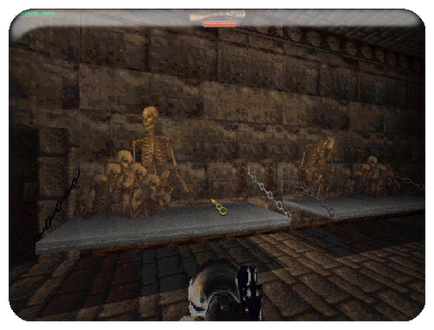 The game itself is a fittingly creepy and atmospheric affair, the house, whilst crudely rendered, boasting a particularly oppressive atmosphere, its shadows and rambling corridors, unlit rooms and peculiar decorations suggesting a supernatural horror that doesn't take very long to manifest. Unlike many horror games of its era, the key here is suspense, the game taking time to establish mystery and suggest the eventual revelations to come. Whilst there are plenty of jump scares and somewhat corny moments, the game also boasts some significant sophistication in terms of its set pieces: Early on, the player will be drawn down a particular corridor by the familiar tack, tack, tack of a type-writer, only to find the device seemingly operating on its own, with no ink ribbon to produce its script. Nevertheless, writing is produced, a single page which, in a clear homage to Stephen King's The Shining, reads: “We live, we live, we live, we live...if you believe in a soul and you have a God, pray to him.”  This is just the beginning of the disturbia that Adam will encounter, the house saturated with negative energies, hauntings of various sorts, occult devices and black magic. After an FMV sequence in which Adam encounters the soul of his dead Father, the game begins in earnest, the house open to Adam's exploration, barring those doors that are locked with occult and arcane markings that can be dispersed by certain key items. The game maintains an air of mystery throughout, the plot and back mythology gradually unfolding through written journals, conversations with other characters, visions and revelations. Whilst the game itself can be clunky, crude and frustratingly oblique, the story and back mythology are intricate and beautifully layered, deriving influence from Lovecraft, Wheatley, King and Poe, as well as paying reference to actual history, occultism and religion. To get the most out of it, the player must immerse themselves in the story and mythology, which helps to dilute some of the cornier moments or the innate problems of its FMV elements. Whilst certainly one of the most successful FMV titles in existence, Realms also emphasises some of the core problems of FMV as a format: one of the key issues of the game is the enormous contrast between its video game elements and live action sequences. Because the game elements are separate from the FMV actors and story, they are free to descend into depths of absurdity in terms of their design and nature, which they do with startling frequency. Whilst the initial “haunted house” setting is sufficiently realistic as not to jar with the live action sequences, it isn't long before the player descends into Hellish dungeons, unholy temples, demon-infested caverns and entirely other realms of being. Whilst those environments are all intriguingly designed and generally well rendered (given the technological limitations of the era), a HUGE problem that serves to dilute verisimilitude is that: the characters rarely respond with the awe or horror that is required. A momentary line from Adam -and/or his on/off again companion, Rebecca Trevisard- would have helped to convince the player that these environments are indeed part of the same universe, that Adam isn't only an entity that exists in the FMV cut scenes.  This problem also extends to the cut scenes themselves: whilst they are undoubtedly some of the better that one will find amongst FMV titles, because the actors are operating against green screen and cannot see the virtual environments that will be projected on them later, they rarely react appropriately to some of the truly bizarre situations in which they find themselves (one notable sequence has the characters traversing various circles of Hell itself, yet they barely remark on the variously surreal and horrific sights that greet them). This serves to dilute immersion and wrench the player out of the narrative by reminding them that this is, indeed, a video game: a confection rather than a reality, which, in turn, dilutes and diminishes the horror that might otherwise have been far more pungent and pervasive. Nevertheless, the game does boast some impressively inventive sequences, including a random room which appears to have been set up for some occult purpose, candles set in a pattern around the floor that, when lit, will trigger an optional -and highly distressing- cut scene in which whispers and voices can be heard in the shadows, something summoned into the room which manifests as a grotesque demonic entity when we cut back to the gaming environment. Another sequence involves navigating a highly fantastical tower complex in which the demon lord Raziel slumbers, the player having to take all pains not to make noise and thereby wake the demon, which results in an automatic and immediate game over. Whilst the game might appear excessively crude and clunky compared to later titles such as the incredible Amnesia: The Dark Descent or even science fiction horror efforts such as BioShock, it is still worthy of a look for those interested in obscure horror titles and the history of the genre in video game culture. It would, however, sadly be the last Gremlin ever produced, the game proving so costly to make (as did many FMV titles) and garnering so little in the way of sales, it effectively buried the company, making it the last gasp of an institution that had sustained since the early days of the Sinclair Spectrum and Commodore systems. Another notable specimen from the FMV era is one that has garnered some significant notoriety in recent years owing to a penchant for YouTube “Let's Players” to feature it on their channels: The horror point and click adventure Ripper is generally fondly remembered by those who originally played it but has also developed something of a cult following amongst younger audiences. Like many FMV titles, the game is a point and click, puzzle adventure affair which combines elements of role playing with horror set pieces, dialogue interactions and some of the most obscure, oblique and hair-tearingly frustrating puzzles ever to grace a video game. An unusual take on “Jack the Ripper” mythos, Ripper takes the essential elements of the serial killer's lore and transplants them into a hokey, pseudo Bladerunner cyberpunk setting. Whilst the relative success of this fusion largely relies upon the player's willingness to forgive certain absurdities (apparently, in the future, the devices with which we connect to the internet will become bigger, cruder and far uglier), not to mention the fact that this game was created in the very, very early days of the internet, long before it saw easy access and popular use from home systems. As such, not only is the various terminology eye-rollingly dated and often meaningless, but the puzzles are largely nightmarish in their obliqueness, requiring the player to interpret abstract symbols and metaphors to engage with puzzles that themselves are poorly programmed or conceived (one such specimen requires the player to reassemble a broken mug to gain a vital clue. However, the mug cannot be rotated through the X or Y axis; it must be assembled piece by piece on a single plain, which artificially enhances the difficulty of the puzzle to absurd degrees).  However, unlike many FMV titles, the game does boast some degree of charm, largely owing to a stellar cast who, despite clearly being uncomfortable and uncertain with the subject matter, put in some wonderfully exaggerated and comic performances. Most notable in this regard has to be the cigar-chomping, growling Chief Detective Magnata, who is both a font of information and an antagonist to the player throughout. Played by Christopher Walken, the character exudes a species of greasy violence and imminent threat that is difficult to ignore, whilst delivering lines in a characteristically off-kilter and arrhythmic manner that enhances the impression of a man on the very edge of lunacy. Providing competition for Walken in the triple-glazed ham awards is Burgess Meredith, better known as The Penguin from the 1960s Batman TV show, who plays an ailing computer expert who alternately warbles and growls every line, spouting comic-book “computer speak” that would have been out of date in the man's own heyday, but which here comes across as ludicrous to the point of hilarious. Ripper is a rare FMV game that has enough in the way of raw charm and intrigue for its flaws to be generally overlooked, the notion of a serial killer that emulates Jack the Ripper's crimes from within cyberspace a sufficiently engaging one, if not entirely successful in its conception or rendering. In terms of its horror, the game relies almost exclusively on mystery and atmosphere: not the type of game where jump scares and horror set pieces are easy to produce, it instead allows the pervasive threat of the eponymous Ripper to do its work. The fact that the killer seems able to strike from anywhere, at any one at any time one that the game utilises with a certain degree of skill, not to mention the incredibly lurid descriptions provided of what the killer actually does to his victims. 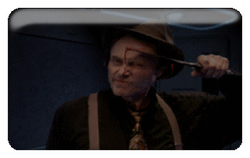 Whilst difficult to recommend as a play experience these days (superceded by eminently more sophisticated titles such as Heavy Rain, which owes a great deal to its legacy), Ripper stands as a fun and diverting curio of video game horror and of the latter day FMV era. Like Realms of the Haunting, it clearly boasts an enormous budget (much of which went on its cast) as well as a fairly coherent (if not entirely satisfying) story line and back mythology. Whilst its science fiction elements are almost negligible (and so ham fisted, even the most casual internet entity will find themselves rolling their eyes throughout), it maintains a certain degree of intrigue because of its characters, their interactions and relationships, the escalating story of the Ripper eventually revealing that he (or she) is one of a cast of characters that the player encounters throughout the game, all of whom have the potential to be the killer, come its conclusion. Sadly, whilst the game's box boasts that it has a mutable ending, the truth is that it's almost entirely random: the game sets itself up such that it doesn't necessarily matter which of the potential candidates actually is the Ripper. Also, there's hardly any deviation in the conclusion depending on which it transpires to be, barring a slight shift in narration. This is an enormous shame, as, despite the hammy acting, the cartoonish characters and the frustrating puzzles, the game still has the potential to be an interesting and clever murder mystery. Instead, it ultimately cops out, providing a conclusion that is far too safe and general, and that, in the case of certain characters, doesn't make an enormous amount of sense. That said, the game does maintain a certain degree of atmosphere, particularly in its latter portions, when the Ripper becomes increasingly aware that you are closing in. Throughout the game, he (or she) sends holographic communications to the player, providing clues as to their identity, threatening them to back off or taunting them about the next kill. These are without doubt some of the most fraught and frightening moments in the game, as the killer masks their voice with an eerie distorting effect and also ensures that the projected image of their face is fittingly monstrous. Beyond that, the game is one that is difficult to recommend to a present day audience: its crudity, its archaisms and its obliqueness is likely to result in smashed keyboards and fractured monitors rather than any degree of satisfaction. But, if you can find a fittingly entertaining “let's play” on YouTube, it might be worthy of your time. The FMV era is generally regarded as a lamentable mess by most video game fans, a time of the most ridiculous presumption and poor decisions that resulted in the total collapse of certain companies and studios. However, for all of its problems, the era also marked certain revolutions in the medium, technically, culturally and in terms of storytelling, that sustain to this day. Without the FMV era, it's arguable that the soon-following survival horror renaissance might never have occurred, the likes of Resident Evil and Silent Hill borrowing heavily from it, combining sequences of FMV with 3D gameplay, resulting in a format that would sustain for a number of generations to come. Whilst there are numerous other titles we could explore -the seminal Gabriel Knight series not least amongst them-, when next we return, we'll be vaulting forward again to the era following survival horror's dissolution, and the consequent efflorescence of entirely different -and arguably more sophisticated- species of horror, starting with Amnesia: The Dark Descent. Until then, folks. COVER REVEAL: THE CHILDREN AT THE BOTTOM OF THE GARDDEN BY JONATHAN BUTCHER

Ginger Nuts of Horror has two copies of the latest Hatchet movie to give away to lucky readers courtesy of Thunderbird Releasing . To be in for a chance to win a copy of the film all you have to do to be in for a chance to win a copy is like and share the Facebook and Twitter Posts that are linked to below. Two lucky winners will be drawn on Friday 21 sep 2109
Ten years after the events of the original movie, Victor Crowley is mistakenly resurrected and proceeds to kill once more.
Thunderbird Releasing is a London-based all-rights film distribution company, with a division in Canada, specialising in arthouse, independent and world cinema.
Click here for more information. BOOK REVIEW: THIRTEEN DAYS BY SUNSET BEACH BY RAMSEY CAMPBELL
|
Archives
April 2023
|





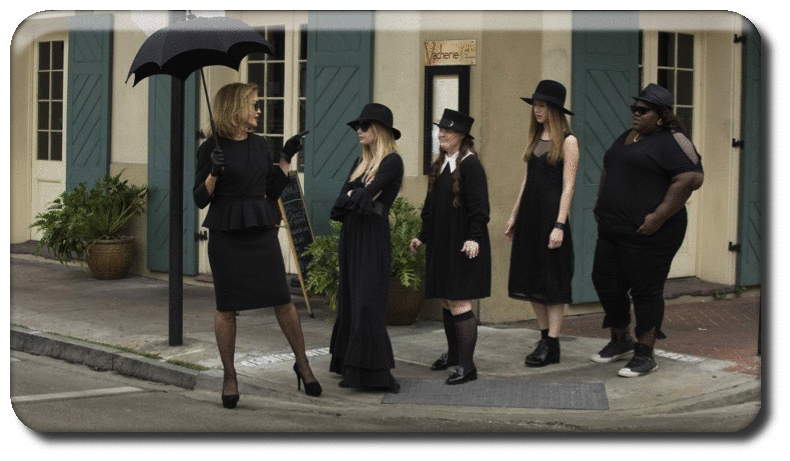

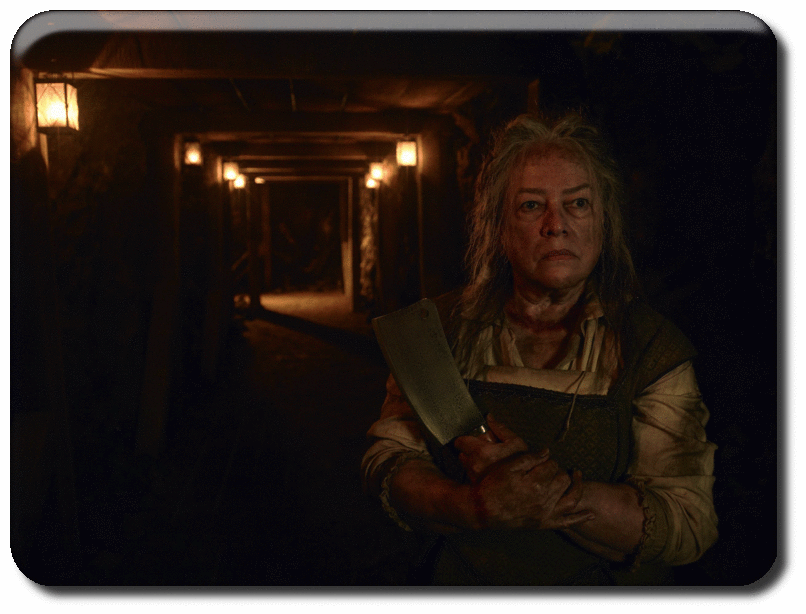





















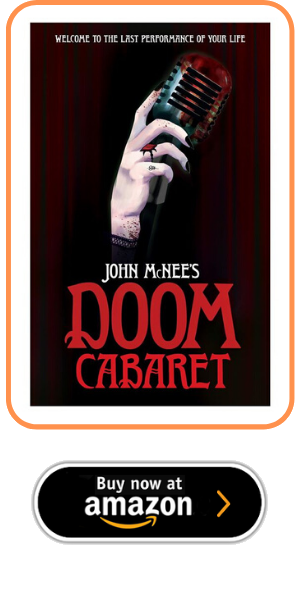
 RSS Feed
RSS Feed

